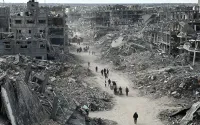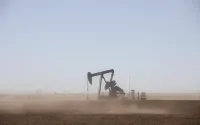17 October 2005cnn.com
The air force said it would deliver 15 tons of food and medicine Monday to communities near Tabatinga, on the upper Amazon near the border with Colombia. The navy planned to take supplies to other river towns isolated by the drought.
The Health Ministry said it was sending nine tons of water purifier to the Amazon capital of Manaus, 1,760 miles (2,840 kilometers) northwest of Rio de Janeiro, to treat well water and avoid disease.
Gov. Carlos Eduardo de Souza Braga of Amazonas, the Amazon's biggest state, declared all 61 Amazonas cities and towns disaster areas over the weekend.
He said the government would distribute emergency food baskets with 55 pounds (25 kilograms) of rice, beans, milk, flour and other staples.
State Civil Defense authorities said 32,000 families were stranded by the falling rivers, which serve as roads in the rain forest, said Jose Melo, head of the state's SOS Interior Emergency Plan.
Braga said he would ask the Federal Electoral Tribunal to release Amazonas residents from a national referendum Sunday, when all Brazilians must vote whether the sale of guns and ammunition should be banned. Failure to vote can be punished with fines.
"There's no way for them to vote," Braga said. Many towns have no roads and rely on rivers for transportation.
Many Amazon rivers have reached the lowest levels ever recorded, Brazil's National Space Sciences Institute said.
And the environmental group Greenpeace said illegal deforestation and global warming were making the drought worse.
The drought has reduced the availability of fish -- a staple of Amazon families -- and is killing the manatees and pink river dolphins typical of the region, the Agencia Folha news service said Monday.
Five dolphins were found killed and gutted for food since Saturday, the Amazon Research Institute.
More than 100 manatees were found dead in the shrunken rivers and lakes, veterinarian Branca Tressoldi told Folha.
But the Brazilian Hydrological Service said water levels in the upper Amazon were rising 4 inches (10 centimeters) a day, as a result of rains in tributaries in Peru.
Still, it's too soon to say if the river will return to former levels, and the higher water could take weeks to reach the mouth of the 4,000-mile-long (6,400-kilometer) river.
"It's the period of transition between the dry season and the rainy season," said weather analyst Ricardo Dellarosa.






